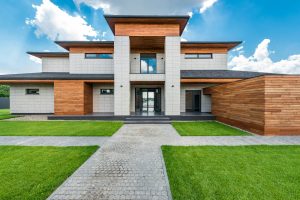ADU Boom: Backyard Micro-Homes Solve Urban Density Crises
As cities become more crowded and urban spaces become more scarce, the concept of backyard micro-homes is gaining momentum as a solution to the growing urban density crisis. These tiny, self-contained living spaces – also known as accessory dwelling units (ADUs) – are gaining popularity among homeowners, renters, and city planners alike. With the potential to not only alleviate the burden of urban density but also provide affordable housing options and promote sustainable living, the ADU boom is changing the way we think about housing in cities.
The Urban Density Crisis
Cities around the world are facing a crisis of density. As populations grow and urban spaces become increasingly crowded, finding ways to house everyone while also preserving green spaces and reducing strain on resources is a major challenge. According to the United Nations, 68% of the world’s population is projected to live in urban areas by 2050, putting even more pressure on already densely populated cities.
The traditional solution to population growth has been to expand outward, sprawling into suburban and rural areas. However, this urban sprawl comes at a high cost, both economically and environmentally. It also perpetuates car-dependency and long commutes, contributing to air pollution and traffic congestion. As a result, many cities are turning to alternative solutions, including the development of ADUs.
The Rise of ADUs
ADUs are small, secondary living units built on the same property as a primary residence. They can take the form of a separate building, an addition to an existing home, or a converted garage or basement. These units typically range from 300 to 600 square feet and may include a bedroom, bathroom, kitchen, and living space, making them suitable for couples, small families, or individuals.
While ADUs are not a new concept, they have gained renewed attention in recent years as a potential solution to urban density. Many cities, including Seattle, Portland, and Los Angeles, have already relaxed zoning laws to allow for the construction of ADUs, and the trend is spreading to other cities across the US and globally. In fact, in 2019, ADUs became legal in California state-wide, a move expected to lead to a surge in ADU construction.
Benefits of ADUs
Increased Housing Supply
One of the most significant benefits of ADUs is their potential to increase housing supply in already dense areas. By utilizing existing urban spaces, ADUs allow cities to accommodate more people without the need for costly and environmentally damaging expansions. This can help to ease the strain on housing markets and reduce the number of people forced to move away from urban areas due to rising rent prices.
Affordable Housing Options
In addition to increasing the overall housing supply, ADUs can also provide affordable housing options in expensive cities. With the rising cost of rent and home ownership, ADUs offer a more affordable alternative for people who want to live in urban areas but can’t afford the high prices. They can also provide an additional source of income for homeowners, helping to offset the high costs of homeownership.
Promoting Sustainability
Another significant advantage of ADUs is their potential to promote sustainable living. These smaller living spaces require less energy to heat and cool, and their compact size encourages people to downsize and live with less, reducing their carbon footprint. ADUs can also be designed with eco-friendly features, such as solar panels, rainwater harvesting systems, and energy-efficient appliances, making them even more environmentally friendly.
The Future of ADUs
The trend towards ADUs shows no signs of slowing down as cities continue to grapple with rising urban density. While many are already benefiting from the increased housing supply and affordable living options that these micro-homes provide, the potential for larger-scale impact is still untapped. With further relaxation of zoning laws, greater investment in sustainable design, and more widespread adoption, ADUs could soon be a significant solution to the urban density crisis.
The ADU boom is more than just a fad; it’s a necessary response to the changing needs of urban living. By offering a sustainable, affordable, and efficient solution to the challenges of density, ADUs are changing the way we think about housing and paving the way towards more sustainable and livable cities.











